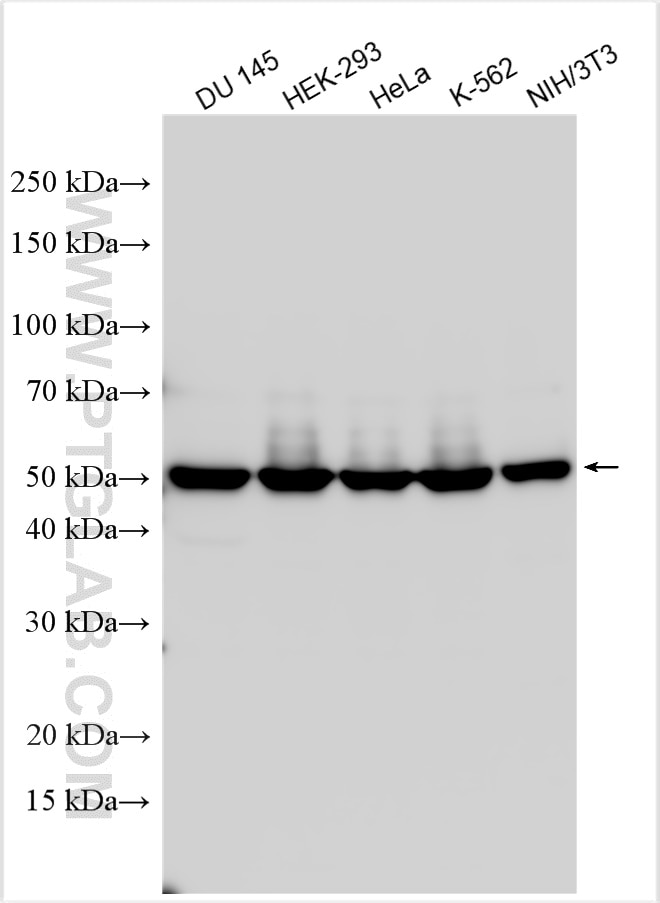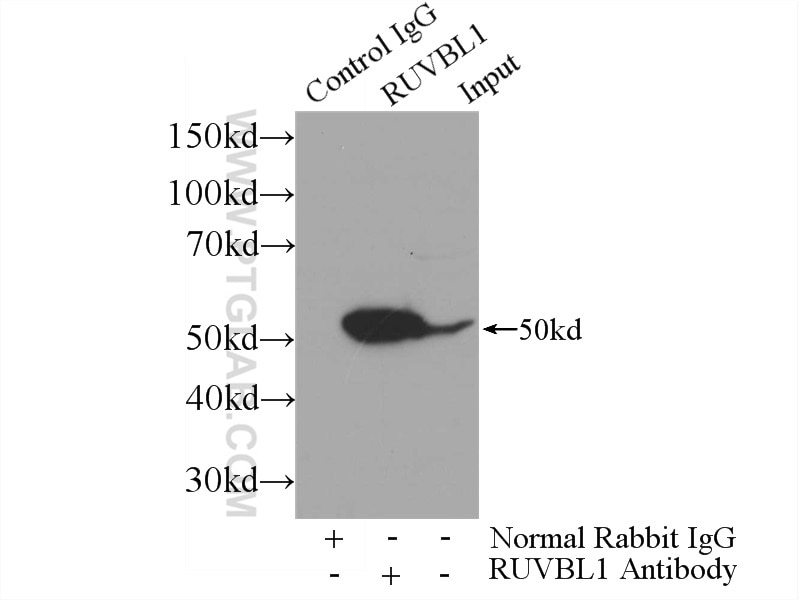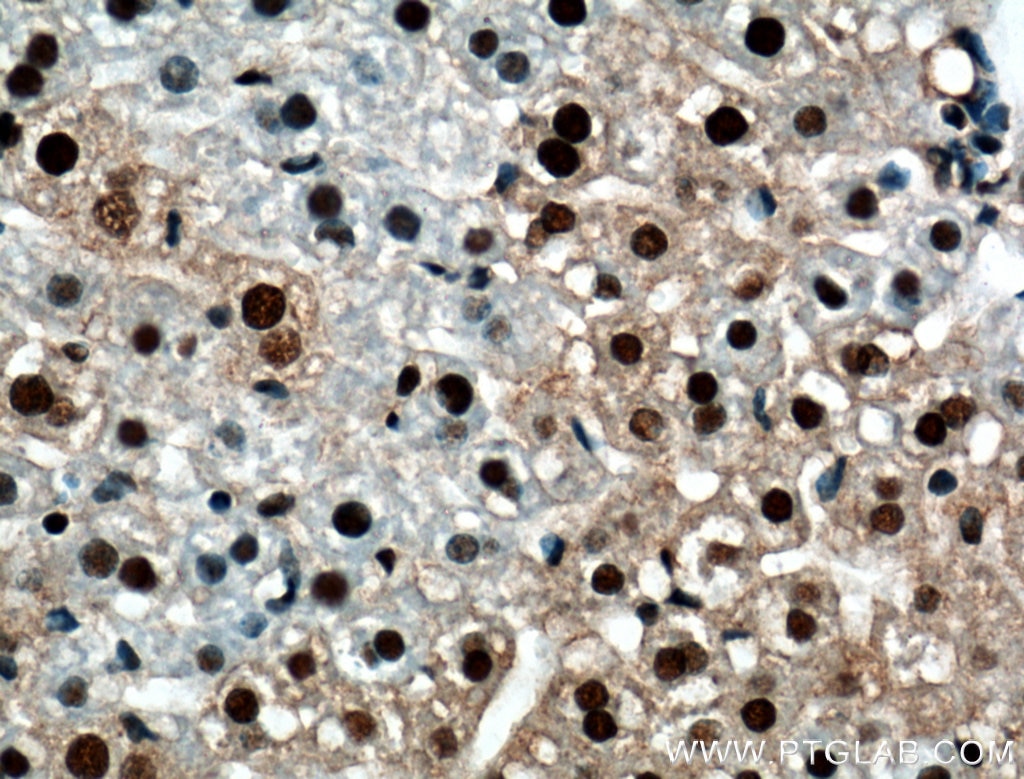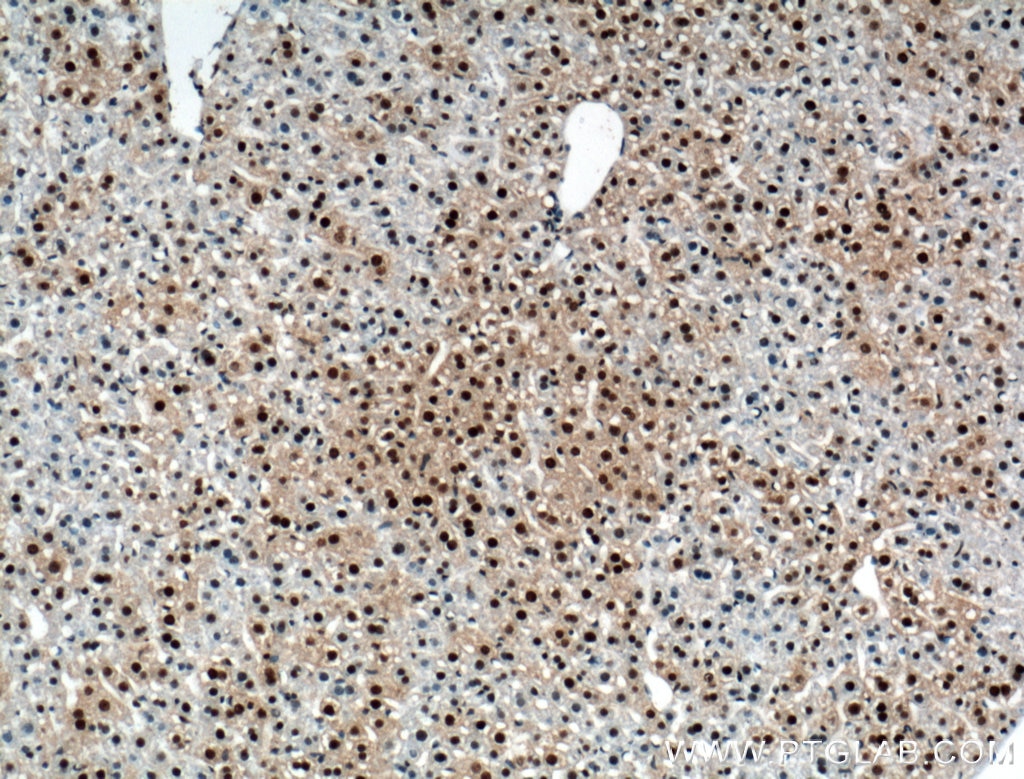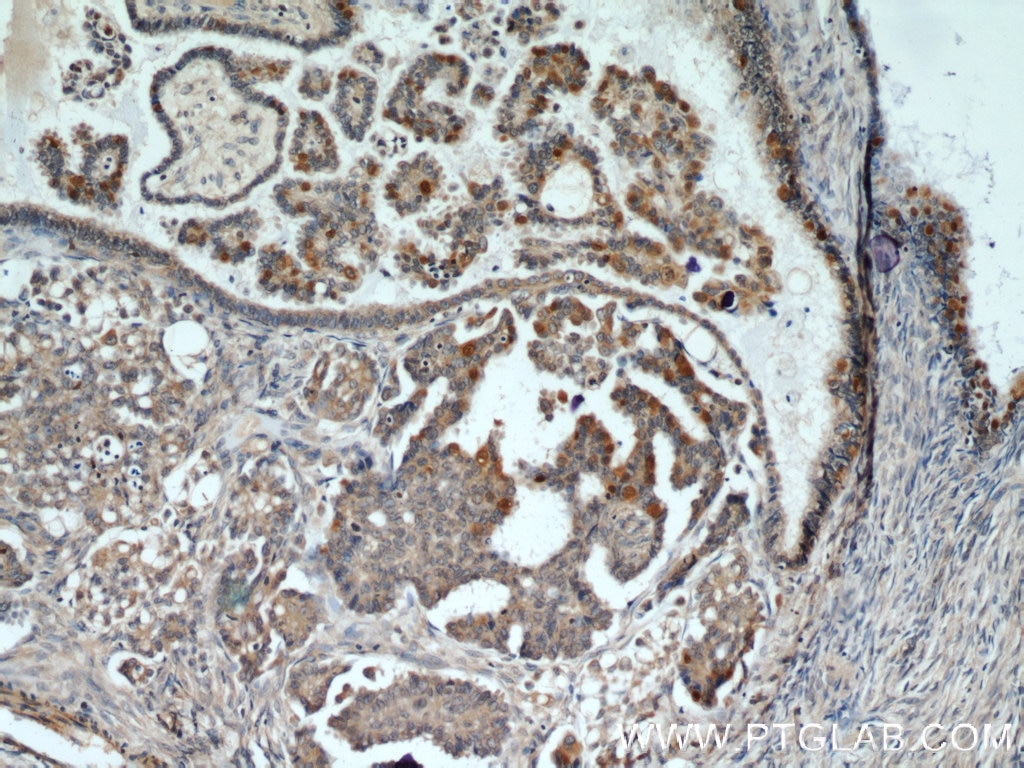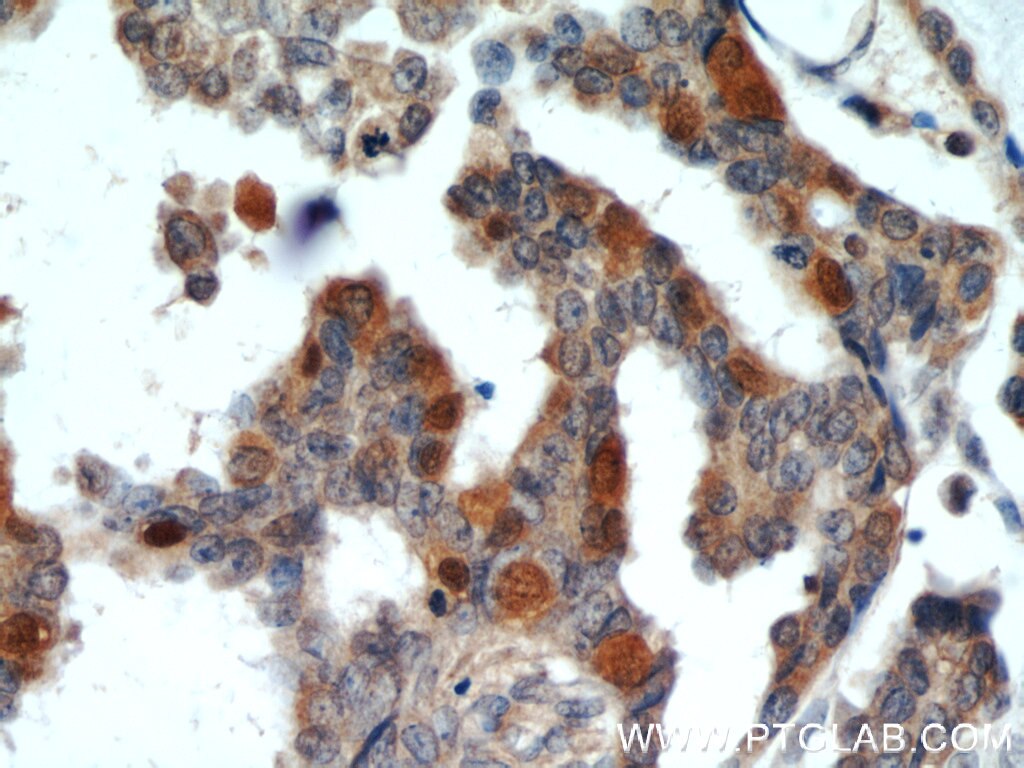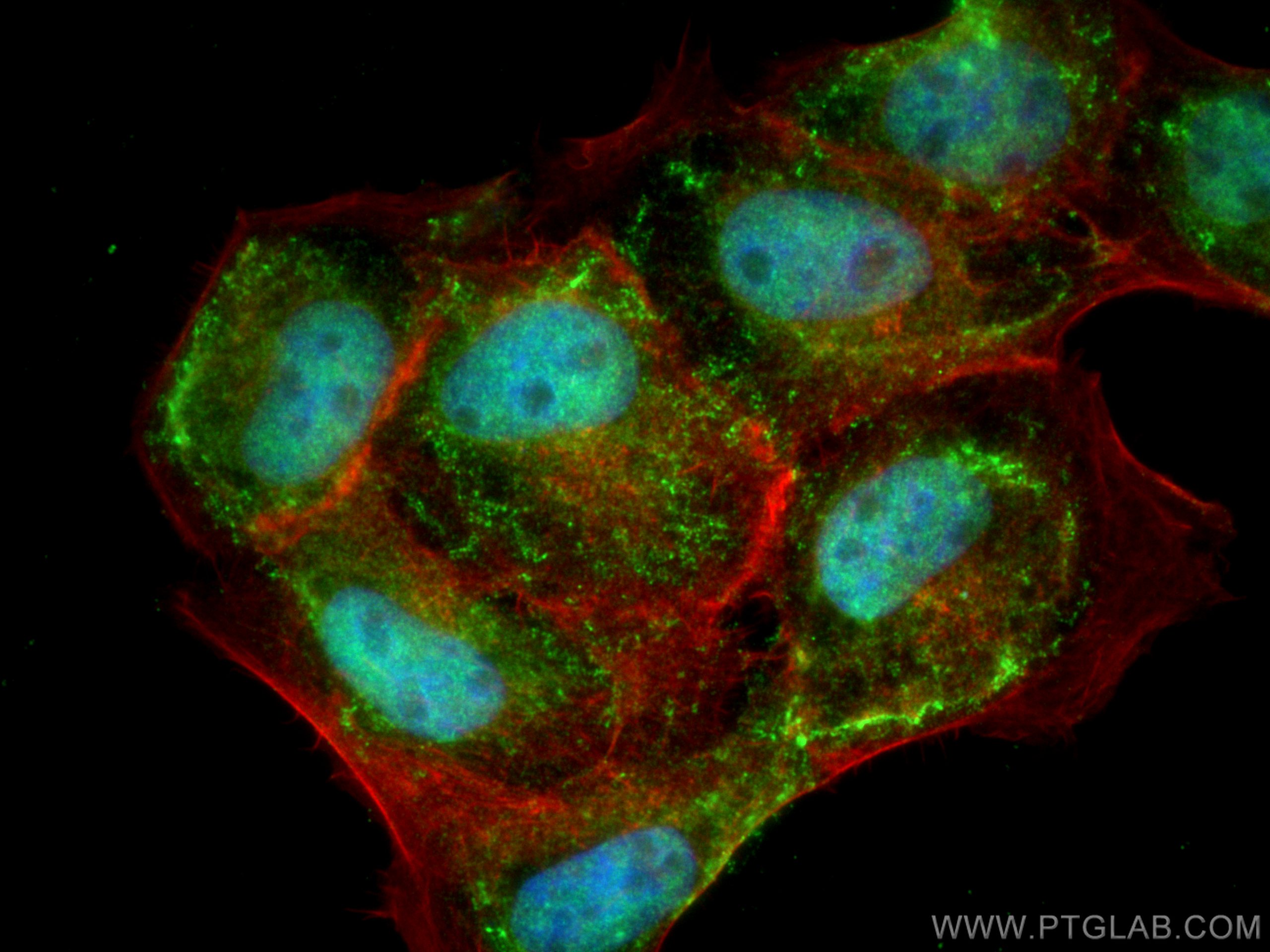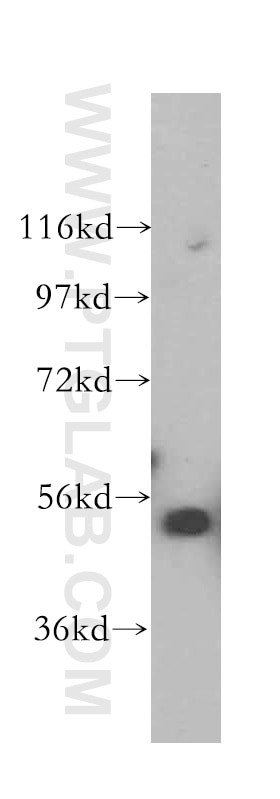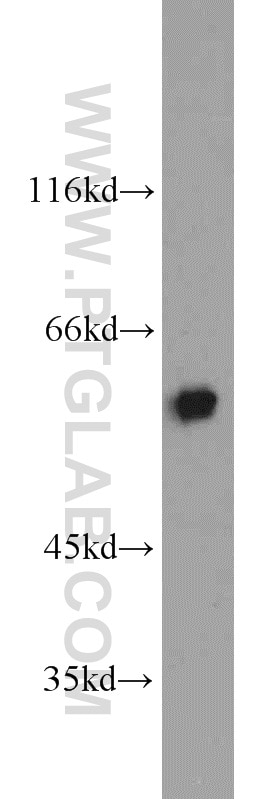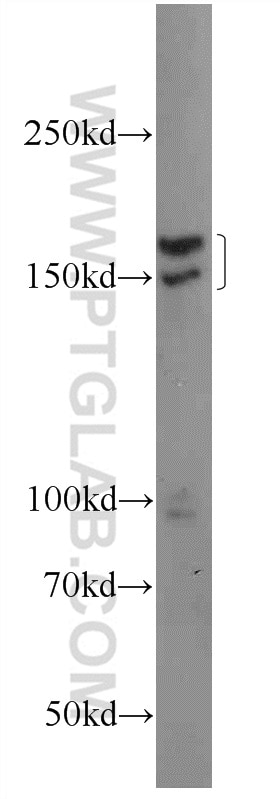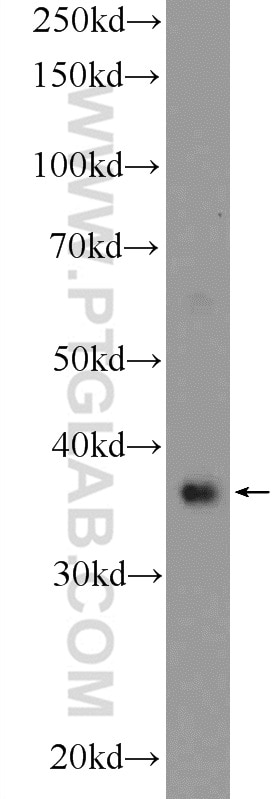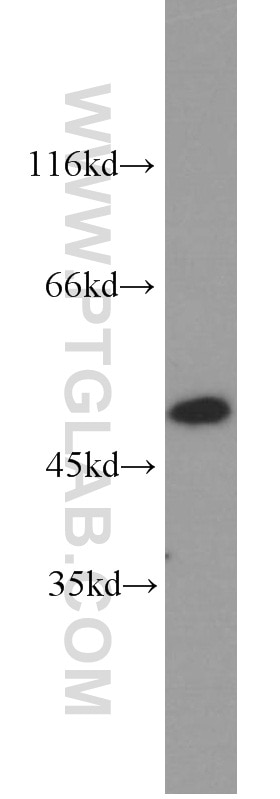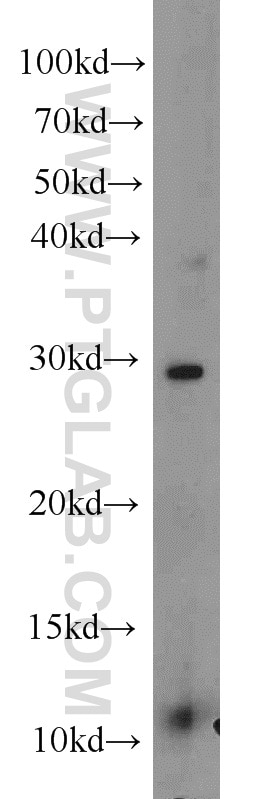- Phare
- Validé par KD/KO
Anticorps Polyclonal de lapin anti-RUVBL1
RUVBL1 Polyclonal Antibody for WB, IP, IF, IHC, ELISA
Hôte / Isotype
Lapin / IgG
Réactivité testée
Humain, souris et plus (1)
Applications
WB, IHC, IF/ICC, IP, CoIP, CHIP, ELISA
Conjugaison
Non conjugué
N° de cat : 10210-2-AP
Synonymes
Galerie de données de validation
Applications testées
| Résultats positifs en WB | cellules DU 145, cellules HEK-293, cellules HeLa, cellules K-562, cellules NIH/3T3 |
| Résultats positifs en IP | cellules HeLa |
| Résultats positifs en IHC | tissu hépatique de souris, tissu de tumeur ovarienne humain il est suggéré de démasquer l'antigène avec un tampon de TE buffer pH 9.0; (*) À défaut, 'le démasquage de l'antigène peut être 'effectué avec un tampon citrate pH 6,0. |
| Résultats positifs en IF/ICC | cellules A431, |
Dilution recommandée
| Application | Dilution |
|---|---|
| Western Blot (WB) | WB : 1:1000-1:10000 |
| Immunoprécipitation (IP) | IP : 0.5-4.0 ug for 1.0-3.0 mg of total protein lysate |
| Immunohistochimie (IHC) | IHC : 1:50-1:500 |
| Immunofluorescence (IF)/ICC | IF/ICC : 1:50-1:500 |
| It is recommended that this reagent should be titrated in each testing system to obtain optimal results. | |
| Sample-dependent, check data in validation data gallery | |
Applications publiées
| KD/KO | See 14 publications below |
| WB | See 41 publications below |
| IHC | See 7 publications below |
| IF | See 4 publications below |
| IP | See 2 publications below |
| CoIP | See 1 publications below |
| ChIP | See 1 publications below |
Informations sur le produit
10210-2-AP cible RUVBL1 dans les applications de WB, IHC, IF/ICC, IP, CoIP, CHIP, ELISA et montre une réactivité avec des échantillons Humain, souris
| Réactivité | Humain, souris |
| Réactivité citée | bovin, Humain, souris |
| Hôte / Isotype | Lapin / IgG |
| Clonalité | Polyclonal |
| Type | Anticorps |
| Immunogène | RUVBL1 Protéine recombinante Ag0281 |
| Nom complet | RuvB-like 1 (E. coli) |
| Masse moléculaire calculée | 456 aa, 50 kDa |
| Poids moléculaire observé | 50 kDa |
| Numéro d’acquisition GenBank | BC002993 |
| Symbole du gène | RUVBL1 |
| Identification du gène (NCBI) | 8607 |
| Conjugaison | Non conjugué |
| Forme | Liquide |
| Méthode de purification | Purification par affinité contre l'antigène |
| Tampon de stockage | PBS avec azoture de sodium à 0,02 % et glycérol à 50 % pH 7,3 |
| Conditions de stockage | Stocker à -20°C. Stable pendant un an après l'expédition. L'aliquotage n'est pas nécessaire pour le stockage à -20oC Les 20ul contiennent 0,1% de BSA. |
Informations générales
RUVBL1 is a member of the AAA (ATPase associated with diverse cellular activities) family of proteins that is associated with several chromatin-remodelling complexes and has important roles in transcriptional regulation, the DNA damage response, telomerase activity, snoRNP assembly, cellular transformation and cancer metastasis[PMID: 21617703]. It consists of 456 amino acids (50 kDa) and interacts with TATA-binding protein (TBP), which is a central component for transcriptional regulation by forming complexes with various transcription regulators. RUVBL1 is a component of a large nuclear protein complex, possibly the RNA polymerase II holoenzyme. RUVBL1 is also highly homologous to RuvB proteins that function as a DNA helicase promote branch migration of the Holliday junction[PMID: 9588198]. This antibody is a rabbit polyclonal antibody to human RUVBL1.
Protocole
| Product Specific Protocols | |
|---|---|
| WB protocol for RUVBL1 antibody 10210-2-AP | Download protocol |
| IHC protocol for RUVBL1 antibody 10210-2-AP | Download protocol |
| IF protocol for RUVBL1 antibody 10210-2-AP | Download protocol |
| IP protocol for RUVBL1 antibody 10210-2-AP | Download protocol |
| Standard Protocols | |
|---|---|
| Click here to view our Standard Protocols |
Publications
| Species | Application | Title |
|---|---|---|
Nat Immunol Hierarchical regulation of the resting and activated T cell epigenome by major transcription factor families. | ||
Mol Cell Metabolic stress controls mTORC1 lysosomal localization and dimerization by regulating the TTT-RUVBL1/2 complex. | ||
Nat Struct Mol Biol R loops regulate promoter-proximal chromatin architecture and cellular differentiation. | ||
Sci Adv Assembly of the asymmetric human γ-tubulin ring complex by RUVBL1-RUVBL2 AAA ATPase.
| ||
Sci Adv Synthetic lethality by targeting the RUVBL1/2-TTT complex in mTORC1-hyperactive cancer cells.
| ||
Avis
The reviews below have been submitted by verified Proteintech customers who received an incentive forproviding their feedback.
FH Deyong (Verified Customer) (03-11-2022) | It worked well in H1 human embryonic stem cell.
|
